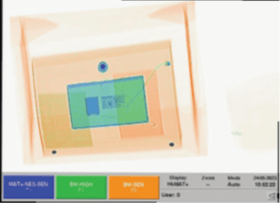The first recorded mail bomb was sent as part of the “Bandbox Plot” in 1712. It was named after a type of hatbox sent to Robert Harley, the Earl of Oxford and British lord treasurer. The box, with a thread fastened to the lid, contained three pistols set to shoot the recipient opening the box. According to the story, as the Earl began to open the box, author Jonathan Swift, who was also in the room, suspected foul play and disarmed the device. Over three centuries later, mail-borne terror remains a very real and persistent threat. As just one example, a series of letter-bomb attacks targeted journalists at various media outlets in Ecuador earlier this year. One of them exploded without injury fortunately.
Security professionals must correctly assess current vulnerabilities and implement robust solutions that will prevent, mitigate and respond effectively to potential mailroom security threats. There are a wide variety of threats that can affect organizations of every size and scope. Industries continually at high risk for mail-borne threats include government agencies, public-facing organizations like financial institutions, high-profile organizations and large-scale crowded venues. The direct costs to organizations affected by a mailroom security threat can be significant, even if ultimately proven a hoax. Beyond direct operational costs, organizations can also experience damage to brand, reputation and industry perception.
The Range of Hazards (CBRNE)
Any organization can be the target of CBRNE (chemical, biological, radiological, nuclear or explosive) threats delivered through mail. The United States Postal Inspection Service (USPIS) reports that in 2020, over 262,000 suspicious mail items were sent for forensics analysis, with inspectors responding to more than 2,356 incidents involving suspicious items, powders or liquids sent in the mail.
An organization’s mailroom is an intake hub for incoming packages in need of distribution to employees, C-suite executives. Unlike a loading dock, where a large majority of inbound deliveries are from known suppliers and vetted partners, a mailroom will receive a high volume of packages from unknown senders which must be subject to advanced CBRNE screening.
Let’s take a closer look at the broad array of threats.
- Chemicals: These threat agents can be poisonous vapors, aerosols, liquids or solids that are either naturally occurring in the environment or synthetically produced. Visual stains or crystal formations on the package can provide important early intel to screeners, however because only miniscule amounts are needed to cause harm, detection through sophisticated technology is best practice.
- Biological Agents: Presenting as white powder, biological substances, like ricin and anthrax, can be quietly released into the air. Many with incubation periods of days or weeks can delay victims from even knowing they have been exposed. The smallest quantities can and will cause major damage and are nearly impossible to detect by human eye.
- Radioactive / Nuclear Substances: While it is not the most easily acquired substance, terrorists can utilize powdered material containing discrete pieces of Cesium-137, Cobalt-60 or Strontium-97. These are highly energetic and dangerous radioactive substances that are commercially available for use within the medical and construction industries. Radiation is challenging to detect without advanced screening technology because it is invisible and absent of odor. Dangerous radioactive mail is also often combined with a bomb to quicken the disbursement and cause more widespread damage.
Improvised Explosive Device (IED): Today’s terrorists will continue to adjust their tradecraft to avert detection and often attempt to conceal homemade explosive devices inside packages containing everyday items. As just one example of countless X-ray images that come into MSA Security’s Emergency Operations Center via SmartTech®, this screened package was addressed to the CEO of a large international food and beverage company. Concerned the image carried all the visual hallmarks of “PIES”, the screener connected with MSA subject matter experts who quickly determined the item was an audio photo frame.
avert detection and often attempt to conceal homemade explosive devices inside packages containing everyday items. As just one example of countless X-ray images that come into MSA Security’s Emergency Operations Center via SmartTech®, this screened package was addressed to the CEO of a large international food and beverage company. Concerned the image carried all the visual hallmarks of “PIES”, the screener connected with MSA subject matter experts who quickly determined the item was an audio photo frame.
No organization is exempt from being the target of mail threats. Bad actors have proven to be disgruntled former employees, activists, extremists and terrorists, or lone individuals with grievances. Effective mail screening programs use today’s most sophisticated screening technology capable of detecting the range of CBRNE substances and can be implemented offsite at a secure location or conveniently and safely onsite. It is an essential component of a non-negotiable and layered security plan designed to protect people, property and assets.
For more information and resources, visit Mailroom Screening Services. To schedule a one-on-one consultation with an MSA subject matter expert to discuss your organization’s unique needs, email info@msasecurity.net.
